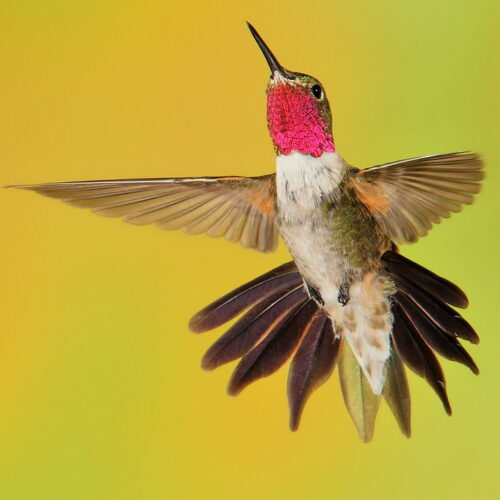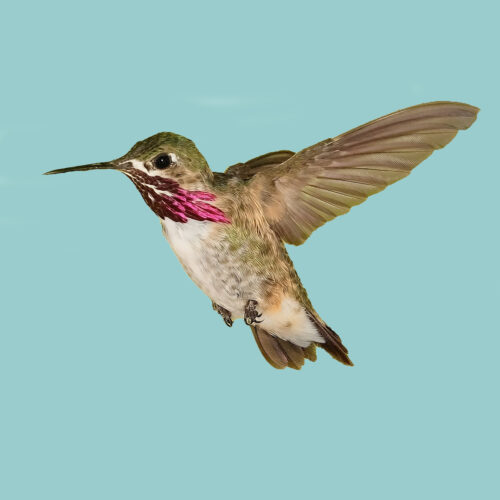Ever wonder what made that trilling noise as it zipped over your head? While you suspected it was a hummingbird, you probably did not know that only the male Broad-tailed Hummingbird makes that unique sound while flying here in Los Alamos.
An often overlooked aspect of hummingbirds is their role as pollinators. While bees get most of the pollinator glory, hummingbirds are also important pollinators. More than 160 native North American plants depend exclusively on hummingbirds for pollination. Many of these unique plants are in the Fuchsia, Yucca, Currant, Sage and Aloe species. Hummingbirds are amazingly adapted pollinators with long, slender bills and tube-like tongues they use to drink nectar from brightly-colored flowers; this gives them the energy they need to fuel their high metabolism. Hummingbirds drink up to two times their body weight in nectar per day. As they move from plant to plant, they carry pollen. As they pollinate the native wildflowers in parks and the plants in your garden, hummingbirds add a splash of color to our landscapes.
Los Alamos County is the springtime breeding grounds for both the Broad-tailed and Black-chinned Hummingbirds. In addition, Los Alamos hosts two other migrant species–the Rufous and Calliope–as they venture North to their breeding grounds in the springtime, and in the summer as they re-fuel for their return south to Central America. Four species doesn’t sound like a lot, but, if you live east of the Mississippi you only have one species, the Ruby-throated. How fortunate we are to have such a variety of these beautiful creatures!
A Few Notes on Each of the Local Hummingbirds:
Broad-tailed Hummingbirds
- Males wings make distinct trilling sound when flying
- Highest altitude breeder in the US
- Usually prefer red flowers

Black-chinned Hummingbirds
- Adaptable – broadest range of habitats
- Mating ritual – fly in a U shaped arc creating a loud wing buzz
- Unsocial – only come together for mating

Rufous Hummingbirds
- VERY, VERY territorial; always on patrol
- Northernmost hummingbird breeder
- Females are slightly larger

Calliope Hummingbirds.
- Smallest bird in Continental North America
- VERY territorial; will chase hawks
- Weighs only a penny (2.5 grams)

Keep an eye and ear out for our lovely hummingbirds, as many have already arrived and started to pollinate plants in your gardens without you knowing. If you decide to feed them, don’t buy the fancy store nectar, make your own. A simple solution of one-part sugar to four-parts water is all it takes. No boiling or dyes required. Remember, these beautiful birds love native wildflowers too, and with the added bonus of providing pollination services, hummingbirds are a welcome addition to your yard and garden.
Text by Bob Loy
Contributing author is a local birding enthusiast and volunteer at Bandelier National Monument where he serves as the Lead Bird Bander. His goal in life is to connect kids with nature as scientific evidence indicates those connected to nature live a longer and healthier life.
